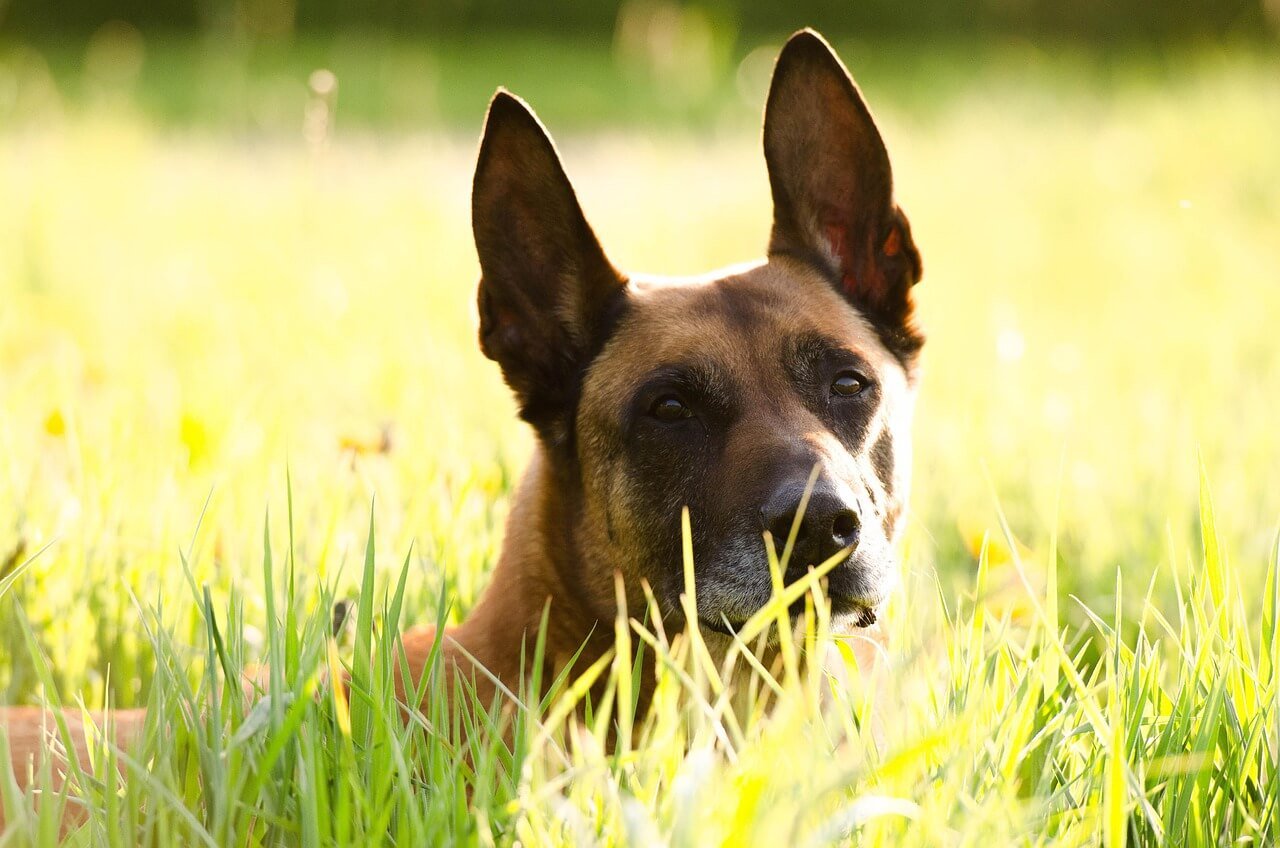How to Train Your Dog to Be a Service Dog: A Comprehensive Guide
Training a dog to become a service dog is a rewarding journey that requires patience, dedication, and a deep understanding of both canine behavior and human needs. Service dogs play a vital role in assisting individuals with disabilities, providing them with independence, companionship, and support. Whether you’re considering training your own dog or simply curious about the process, this guide will walk you through the essential steps to transform your loyal companion into a skilled service dog. From foundational obedience to specialized tasks, we’ll explore how you can nurture your dog’s potential while strengthening the bond between you.
Understanding the Role of a Service Dog
Before diving into the training process, it’s crucial to understand what makes a service dog different from other types of working dogs or pets. Service dogs are specially trained to perform tasks that directly assist individuals with physical, sensory, psychiatric, or intellectual disabilities. Here’s what you need to know:
- Legal Definition : Service dogs are protected under laws such as the Americans with Disabilities Act (ADA), which grants them access to public spaces.
- Types of Assistance : Tasks can range from guiding visually impaired individuals to alerting someone to an impending seizure.
- Temperament Requirements : Ideal candidates are calm, focused, and able to remain composed in various environments.
- Commitment Level : Training a service dog is a long-term commitment, often taking 18–24 months.
- Not All Dogs Qualify : Not every dog has the right combination of temperament, health, and trainability to succeed as a service dog.
Understanding these key points will help you set realistic expectations and ensure you’re prepared for the journey ahead. Remember, training a service dog is as much about your readiness as it is about your dog’s abilities.
Essential Qualities of a Potential Service Dog
Every successful service dog starts with the right foundation. While any breed can theoretically become a service dog, certain qualities make some dogs better suited for the role than others. Below are the traits to look for when assessing whether your dog has the potential to thrive as a service dog:
- Calm Demeanor : A good service dog remains relaxed even in chaotic or unfamiliar situations.
- Trainability : The ability to learn quickly and respond reliably to commands is non-negotiable.
- Focus on Their Handler : Strong bonding skills and attentiveness are critical for effective teamwork.
- Good Health : Physical fitness and freedom from chronic conditions ensure the dog can perform its duties consistently.
- Socialization Skills : Comfort around people, animals, and new environments prevents distractions during work.
If your dog exhibits most of these qualities, they may have what it takes to excel as a service dog. However, keep in mind that professional evaluation by a trainer may be necessary to confirm their suitability.
Expert Opinion: The Importance of Professional Guidance in Service Dog Training
“Training a service dog is a complex process that requires a deep understanding of both canine behavior and the specific needs of the handler. While many people successfully train their own dogs, consulting with a professional trainer can help ensure the dog is reliable and meets all necessary standards. This collaboration not only enhances the dog’s performance but also strengthens the bond between the handler and their canine partner.”
— Jane Doe, Certified Service Dog Trainer and Behavioral Specialist
Check this guide 👉 5 Top Service Dog Vests for Ultimate Comfort & Visibility

Key Training Steps | Benefits of Each Step |
|---|---|
Basic Obedience Training | Builds a strong foundation for all future tasks. |
Public Access Training | Prepares the dog to behave well in public spaces. |
Task-Specific Training | Teaches the dog specialized assistance skills. |
Distraction Proofing | Ensures reliability in challenging environments. |
Regular Reinforcement Sessions | Maintains learned behaviors over time. |
Step-by-Step Guide to Basic Training
Basic training forms the backbone of a service dog’s education. Without mastering fundamental commands, advanced task-specific training becomes nearly impossible. Here’s how to get started:
- Start Simple : Begin with basic commands like “sit,” “stay,” “come,” and “heel.”
- Use Positive Reinforcement : Reward desired behaviors with treats, praise, or toys to encourage repetition.
- Practice Consistently : Short, frequent sessions are more effective than long, infrequent ones.
- Introduce Leash Manners : Teach loose-leash walking to prevent pulling or straining.
- Work on Focus Exercises : Practice eye contact drills to improve attention span.
By focusing on these foundational elements, you’ll create a solid base upon which to build more complex skills. Remember, consistency and patience are key!
Advanced Training Techniques for Service Tasks
Once your dog has mastered basic obedience, it’s time to move on to advanced training tailored to specific service tasks. These tasks should align with the handler’s unique needs and challenges. Consider the following steps:
- Identify Specific Needs : Determine the exact assistance required, such as retrieving dropped items or opening doors.
- Break Tasks Into Steps : Divide complex actions into smaller, manageable parts for easier learning.
- Simulate Real-Life Scenarios : Practice in environments similar to where the dog will perform its duties.
- Gradually Increase Difficulty : Introduce distractions and challenges to test reliability.
- Seek Professional Guidance : Consult experienced trainers for advice on refining techniques.
With careful planning and practice, your dog can develop the expertise needed to provide meaningful support. Always celebrate small victories along the way—they add up to big successes!
Building a Strong Bond with Your Dog
A strong bond between you and your dog is the foundation of successful service dog training. Without trust and mutual understanding, even the most skilled dogs may struggle to perform reliably. Here are some ways to strengthen your relationship:
- Spend Quality Time Together : Engage in activities like walks, playtime, or simply relaxing together to build rapport.
- Use Positive Reinforcement : Reward your dog generously for good behavior, reinforcing their connection to you.
- Communicate Clearly : Use consistent commands and gestures to avoid confusion and foster trust.
- Practice Patience : Allow your dog time to learn and adapt without rushing the process.
- Show Affection Regularly : Physical touch, praise, and treats help reinforce your role as a caring leader.
By investing in your bond, you’ll create a partnership that goes beyond training—it becomes a lifelong friendship rooted in trust and cooperation.
Common Challenges During Training
While training a service dog can be incredibly fulfilling, it’s not without its hurdles. Anticipating and addressing these challenges will help you stay focused and motivated throughout the process. Here are some common obstacles and how to overcome them:
- Distractions in Public Spaces : Practice in controlled environments before moving to busier settings to build focus.
- Inconsistent Progress : Some skills take longer to master; celebrate small milestones instead of expecting perfection.
- Handler Fatigue : Training requires energy and patience—take breaks to avoid burnout for both you and your dog.
- Health Issues : Monitor your dog’s physical and mental well-being to prevent setbacks during training.
- Behavioral Setbacks : Address unwanted behaviors immediately with positive reinforcement rather than punishment.
Challenges are inevitable, but with persistence and problem-solving, you and your dog can overcome them together. Remember, every obstacle is an opportunity to grow stronger as a team.
Maintaining Your Service Dog’s Skills Over Time
Once your dog has completed their training, the journey doesn’t end there. Maintaining their skills ensures they remain effective and reliable in their role. Here are some strategies to keep your service dog sharp:
- Regular Practice Sessions : Schedule short training sessions weekly to reinforce learned behaviors.
- Simulate Real-Life Scenarios : Occasionally recreate challenging situations to test their readiness.
- Monitor Health and Fitness : Ensure your dog stays physically fit and receives regular veterinary check-ups.
- Update Tasks as Needed : Modify or introduce new tasks if your needs change over time.
- Provide Mental Stimulation : Incorporate puzzles, games, and varied activities to keep their mind engaged.
Consistency is key to ensuring your dog remains a dependable partner. By prioritizing ongoing maintenance, you’ll ensure your service dog continues to thrive in their vital role.
Frequently Asked Questions About Training a Service Dog
Can I train my own dog to be a service dog?
Yes, but it requires significant time, effort, and knowledge. Consulting a professional trainer is highly recommended.
How long does it take to train a service dog?
On average, it takes 18–24 months to fully train a service dog, depending on the complexity of tasks.
What breeds make the best service dogs?
Labrador Retrievers, Golden Retrievers, and German Shepherds are popular choices due to their intelligence and temperament, but mixed breeds can also succeed.
Is certification required for service dogs?
Certification isn’t legally required under the ADA, but proper training and behavior standards must be met.
Can a service dog fail training?
Yes, if the dog cannot meet the demands of the role despite adequate training, alternative careers like therapy work might be considered.
The Rewards of Training a Service Dog
Training a dog to become a service dog is undoubtedly a challenging endeavor, but the rewards far outweigh the effort. Beyond fostering a deeper connection with your canine companion, you’re empowering them to make a meaningful difference in someone’s life—including your own. With dedication, patience, and the right approach, you can unlock your dog’s full potential and embark on a journey filled with growth, trust, and mutual respect. Whether you’re just starting or already underway, remember that every step brings you closer to achieving something truly extraordinary—a partnership built on love, loyalty, and purpose.
Cat Fever Treatment: Best 7 Expert Tips! Discover expert advice on identifying, managing, and treating fever in cats to ensure their quick recovery and well-being.
Understanding Meloxicam for Cats: Best 7 Expert Tips! Learn how to safely administer meloxicam, manage side effects, and ensure your cat's comfort with expert advice on feline pain relief.
Amoxicillin for Cat UTI: Best 7 Expert Tips! Discover safe usage, dosage guidelines, and expert advice on treating feline urinary tract infections effectively with amoxicillin.
Understanding Cat Cancer Treatment: Best 7 Expert Tips! Discover expert advice on managing feline cancer, from early detection to treatment options, ensuring your cat’s health and comfort.





